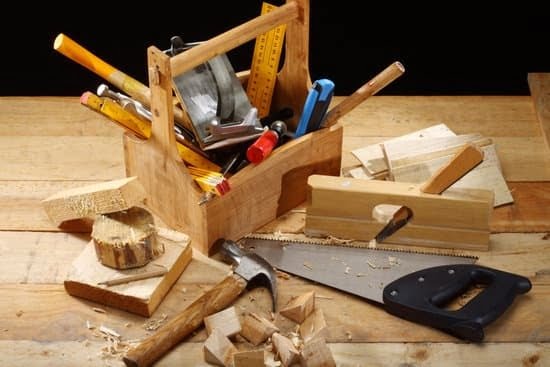Introduction
Colonial woodwork is a beautiful and timeless expression of craftsmanship. This type of woodwork was popular in the 18th and early 19th centuries due to its elegant appearance and intricate detailing. Today, many people still love the look of colonial-style joinery, ornate moldings, paneled wainscoting, and other decorative features that defined this era’s taste in interior design.
This style of woodwork was typically made using a variety of hardwoods such as cherrywood and mahogany, while many pieces boasted intricate hand carvings or details created by turning lathes. Examples of these include rosettes, balusters, finials, coves, scallops and more. Colonial woodworkers often chose to leave portions of their projects unfinished in order to enhance the natural beauty of the wood grain and add extra depth to their designs.
Due to its high quality construction and unique designs, colonial woodwork adds charm and character to any interior space. Despite its age it remains incredibly durable; therefore it can be used today inside homes just as it was originally intended centuries ago. This style is perfect for those who seek to incorporate history into modern spaces or for those looking for an inherited piece with an original flair. From doors and furniture to mantels and cabinetry – all showcase the craftsmanship synonymous with this style’s long-standing tradition. Today there is also a large collection of reproductions that capture the same look without needing preservation like antique pieces do.
Colonial woodworking not only adds charm but also values stability – it cannot be overlooked that much historical value can be found within vintage pieces today preserved from years past or within a stunning reproduction designed to fit any preference. All in all colonial-style joinery continues to offer consumers one-of-a-kind furnishing options with durability meant to last lifetimes ahead!
Colonial Woodworking Styles and Practices
Colonial woodworking was a practice that began in Europe and continued throughout the Americas. It saw great use by early settlers to create utilitarian furniture, farm equipment, decorative pieces, and house framing. Techniques such as joinery, mortise-and-tenon joints, and dovetailing were popular methods for constructing furniture pieces. The most common woods used for Colonial woodworking were pine, oak, hickory, and mahogany ” chosen for their strength and durability. They also had an aesthetic quality that made them suitable for a variety of decorative applications such as inlays, turned spindles and shapely legs.
Another aspect of Colonial woodworking was the focus on craftsmanship rather than mass production as well as precise finishes which often included hand carved cabinets or tables. Paint or varnish was added to create unique personalized touches. The use of timbered boards could also be seen along with customized borders or edges around pieces to complement the individualistic designs sought after during this time period. Furthermore Colonial woodworking often incorporated new tools such as the lathe which allowed artisans to craft circular shapes out of many different types of materials like metal or glass rather than just wood allowing craftsmen to create more complex designs at once. Lastly intricate details such as hinges to open doors or small knobs on drawers were critical additions for specific projects giving them a sense of every detail accounted for directly from the carpenter’s hands.
Overview of the Different Woods Used
Colonial woodwork was a type of woodworking during the late 1600s and early 1700s often written about in American history books. It was characterized by a variety of wood types used to create furniture, buildings, tools, and decorative elements. The types of wood used by colonial woodworkers were mostly limited by what was available in the colonies at the time.
The most commonly used woods for this style of crafting were pine, walnut, cherry, oak, maple, and mahogany. Softwoods like pine were favored for building large structures because they are light and easy to work with while still being sturdy enough to handle weight. Hardwoods like cherry and oak were more sought-after for making furniture since they are denser than softwoods and more durable over time. Maple is one of the most common woods in furniture construction due to its accessibility as well as for its unique patterns and grain when stained or varnished. Mahogany has an even stronger grain pattern than maple with rich red hues which have been highly sought after through the centuries; motor vehicle enthusiasts often use it for custom hot rods or boatbuilding projects as well as cabinets and furniture pieces.
The Timeless Craftsmanship of Colonial Woodworking
Colonial woodworking was a craft developed during the early colonization of America. At the time, tools and techniques were quite simple and some of the earliest colonists gathered their materials from readily available sources such as downed trees in nearby forests. The most common type of wood used during Colonial times was softwoods like pine, hemlock and spruce which were abundant. Some other useful types of hardwood such as oak could also be found but these were expensive to purchase or process.
Colonial woodworking was characterized by its heavy use of hand tools- including saws, chisels, planes, augers and braces. A skilled craftsman could produce amazing results from these humble instruments with very little in the way of specialized supplies. For instance, furniture such as tables and chairs could be crafted from just a handful of carved body parts lashed together with a combination of dowels and wooden pegs. Cabinetmaking evolved into an art form that created beautifully detailed pieces using intricate joinery techniques. Other useful household items such as shelves, cradles and Spice Boxes were also produced in great quantities during this time period. These objects have now become collectors items due to their timeless beauty and craftsmanship.
Colonial woodwork was often characterised by its strength and durability; pieces that were made many centuries ago are still standing strong today! The high-quality joinery used in creating objects is what gives them this lasting quality; dovetail joints being the most popular form served to strengthen the panels even further so they would last for generations to come! Both the practicality and aesthetic qualities inherent in Colonial-era wood work attest to the skill required by their master craftsmen who knew how to create truly functional works of art with minimal resources.
Analyzing the Precision and Artistry in Colonial Pieces
Colonial woodwork had an unmistakable look that set it apart from other furniture styles of the time. Created by artisans with an eye for detail and precision, these pieces combine the best aspects of craftsmanship into timeless objects that have become iconic today.
Many consider colonial woodwork to be highly decorative due to its intricate carvings and ornamental designs. Many pieces incorporated structural details such as dentils, fluting, ogees, and reeding which added to their unique appearance. Paint was often used both to emphasize certain elements as well as for decoration; red, blue, yellow, green are popular color choices among antique collectors. Furniture craftsmen in the colonies were also known for their skill in incorporating woods like cherry, tiger maple and walnut into their designs. It was not uncommon for them to make each piece multiple times until they were satisfied with the end result – a practice rarely seen today.
Finally, it is important to note how versatile colonial woodworking was during this period – from dining tables to bed frames and even architectural components like cornices and mantles. Artisans employed everything from traditional turning techniques to modern joinery practices when constructing these pieces; creating show-stopping works of art in the process. As a result, any item produced by this era continues to have remarkable authenticity that can’t be replicated no matter how hard we try!
The Cultural Significance of Colonial Woodworking
Colonial woodworking was the style of the day for early Americans. It covered a variety of different styles”from simple, functional pieces to elaborate designs incorporating various decorative elements. Practicality and tradition were both paramount in these creations. Many of these pieces served modest, utilitarian purposes, such as farm implements, storage items, and housing components. From small tools to large furniture projects this finely crafted style has withstood the test of time and remains a distinctive visual element in American culture today.
Symbolically speaking, colonial woodworking represents sturdy craftsmanship and durability in several ways. In a philosophical sense it conveys the same kind of resilience that was demanded by early American settlers who lived hand-to-mouth without having their basic needs met by technology or modern comfort items like refrigerators or heating systems. Artistically speaking it shows an appreciation for natural beauty invested into the design components and surfacing of these handmade pieces through carvings, etchings, paintwork, or combining different kinds of woods in order to add contrast and style. Finally its worth is immeasurable withstanding so many years still being appreciated today as much as when they were first created centuries ago. This alone speaks to a certain level of timelessness which gets passed on to each generation as family heirlooms bringing history alive one piece at a time from person-to-person down through the ages.
Tips for Authenticating Colonial Woodwork
One of the surest ways to authenticate Colonial woodwork is by the method of construction used in the period. Before industrialization and the advent of modern techniques, traditional woodworking methods dictated how projects were crafted. Hand tools such as draw knives, chisels, and planes were often employed to shape timbers into intricate patterning or decorative elements such as baluster posts, cornices and spirals. Selected boards were joined together with mortise and tenon joints or lap joints. While there are numerous variations on these joinery types, understanding the different methods can help with authentication.
In addition to studying building techniques, it’s also important to look at the wood type used for a project. Many Americans living during this time had a preference for certain woods based on its availability and durability. Black walnut was commonly used for furniture pieces due to its strength but Maple was favored for cabinets because it took detailed carvings well – both species still have high value today because of their popularity back then. Toward the end of the era, we start to see more specialty woods like Butternut being used by craftsmen which adds further weight to any authentication process.
Finally in order to validate an item’s authenticity date stamps or signatures may be present on unfinished projects or undersides often indicating who produced them paired with when it was crafted. If all else fails a qualified furniture collector should be consulted for their expertise regarding value and history behind particular pieces of Colonial Woodwork
Recognizing Popular Colonial Woodwork Projects
Colonial woodwork is a style of craftsmanship that dates back to the 17th centuries when European settlers first started arriving in North America. Characterized by simple, sturdy construction and utilitarian designs, colonial woodwork was a key part of early American architecture and design. Popular projects in this style include furniture, cabinetry, and built-in libraries”all of which were common features of prominent 18th century houses.
The most recognizable hallmarks of colonial woodwork are its clean lines and use of small moldings”which allowed for efficient production on smaller municipal budgets. Instead of intricate details, the style relied primarily on straight cuts executed with precision to create strong lines that would last for years. Finishes were often simple as well, with dielectric coatings being preferred over oil-based paints, which could require multiple coats for complete coverage.
Today, colonial woodworking projects may be situated indoors or outdoors and generally consist of cabinetry like bookcases, built-ins databases and entertainment units; windows or shutters; or wall paneling or wainscoting”all finished with traditional glazes or stain styles like ebony and pickled white pine. Other popular items include dining room tables and chairs made from maple or cherry woods; sideboards; chests of drawers; armoires; beds; dressers; picture frames; mirrors; chests and trunks. Some colonial pieces even feature brass hardware like knobs or hinges as a beautiful finishing touch that gives each item an additional level of refinement.
Adding Protection and Care to Your Colonial Woodwork
Colonial woodwork is a beautiful and timeless form of art. However, with age, the elements can take their toll on your colonial-style furniture and decorations. Fortunately, there are easy steps you can take to ensure your woodwork will continue to shine for years to come.
One incredibly important step in protecting your colonial woodwork is sealing it with a wax or waterproof finish. This layer of protection helps keep dirt, grime and moisture out of the grain by providing a smooth surface on top of the wood that resists cracking and warping. Additionally, choosing a wax or sealant with UV protection can help prevent damage from overexposure to sunlight. To properly apply the sealant, lightly sand the furniture before applying an even coat using a soft cloth or brush.
As part of routine maintenance and upkeep, it’s also important to regularly clean your colonial woodwork using a mild detergent and water mixed with a little vinegar. This solution gently cleans off dust, dirt and sweat marks while preserving the finish and luster. In addition to wiping down surfaces with this solution from time to time, be sure not to forget about vacuuming crevices as built up dust over time can create an ideal environment for mold growth if left unchecked.
To maximize protection for your colonial woodwork pieces throughout their lifespan, make sure you keep them away from radiators or other sources of direct heat as much as possible. As drastic temperature fluctuations cause expansion and contraction of the wood itself causing cracks or breaks later down the line. Finally, consider putting protective felt pads beneath larger pieces in order to avoid scrapes when shifting them around during cleaning or rearranging purposes. Following these tips will certainly ensure that all your precious colonial wood furniture remain in impeccable condition for generations!
Conclusion
Colonial woodwork offers the modern-day craftsman an opportunity to replicate the beauty and artistry of furniture, fixtures, and other building elements from a by-gone era. While many commercial sources exist for moldings and other woodworking components that were used during the colonial times, there remains much potential for workshop-made pieces to capture the classic craftsmanship that is so admired in historical buildings. By researching historic archives and experimenting with traditional joinery techniques, carving tools, stains, and finishes, today’s carpenter can create vintage-looking items that harken back to an earlier time. With a few essential tools, some practice and patience, any carpenter can become a skilled tradesman capable of producing long lasting items that are sure to become family heirlooms.

Hi everyone! I’m a woodworker and blogger, and this is my woodworking blog. In my blog, I share tips and tricks for woodworkers of all skill levels, as well as project ideas that you can try yourself.





